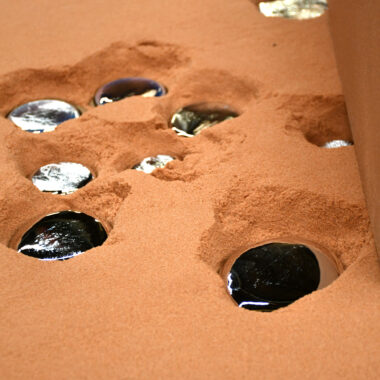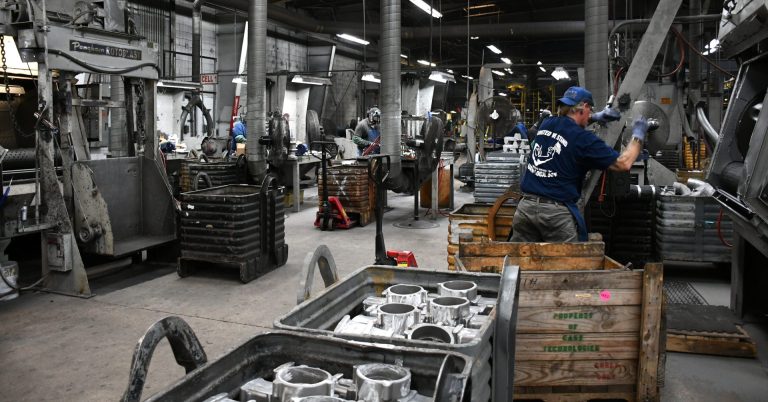Attaining Quality in Aluminum Casting: Insider Tips and Techniques
Attaining Quality in Aluminum Casting: Insider Tips and Techniques
Blog Article
Dive Into the World of Aluminum Spreading: Comprehending the Different Techniques
Aluminum spreading is an essential process in the manufacturing sector, with different techniques used to produce precise and elaborate parts. From the conventional sand spreading method to the sophisticated die spreading procedure, each method uses distinct advantages depending on the needs of the job.
Sand Spreading Approach
Sand spreading, a widely-used approach in light weight aluminum spreading processes, involves creating mold and mildews made of compressed sand for pouring molten metal. Once the mold is all set, it is firmly positioned in a flask and molten light weight aluminum is poured into the tooth cavity.
After the metal has cooled and strengthened, the sand mold and mildew is broken away to reveal the light weight aluminum spreading. Sand casting enables the manufacturing of intricate forms and big parts that may be costly or tough to create using various other techniques. It is likewise a sustainable technique as the sand can be reused and utilized multiple times, lowering waste in the casting process.
Permanent Mold Method

One significant advantage of the Permanent Mold Technique is the improved dimensional accuracy it offers. The metal mold and mildew enables tighter tolerances and better information in the last light weight aluminum castings compared to sand casting methods. This accuracy makes it a recommended selection for applications where tight dimensional control is vital, such as in the auto and aerospace sectors.

Die Casting Refine

Investment Casting Technique
Making use of an accuracy casting approach, Financial investment Casting Strategy includes producing detailed aluminum components by putting liquified metal into a ceramic mold. This process, also recognized as lost-wax spreading, starts with the creation of a wax pattern of the desired component. This wax pattern is then coated with a ceramic product to develop a shell. As soon as the ceramic covering is solidified, it is heated up to remove the wax, leaving a hollow ceramic mold and mildew.
Investment spreading is typically made use of for making components in markets where tight tolerances and complex layouts are required, such as aerospace, vehicle, and clinical equipment. The flexibility and accuracy of the Financial investment Casting Strategy make it an important strategy in the globe of aluminum spreading.
Lost Foam Casting Approach
Having actually discovered the detailed accuracy of Financial investment Casting Technique, the focus now shifts to the innovative method of Lost Foam Spreading in light weight aluminum element manufacturing. Lost Foam Casting, also recognized as evaporative pattern casting, is a modern-day technique where a foam pattern of the preferred component is developed and after that coated with a refractory product.
Additionally, Lost Foam Spreading is a cost-effective procedure as it decreases the demand for cores and allows for the manufacturing of lightweight parts. In spite of its benefits, Lost Foam Casting calls for cautious control of the spreading process to prevent issues and guarantee top quality components.
Verdict
In final thought, light weight aluminum casting provides a selection of approaches such as sand casting, irreversible mold method, pass away spreading, investment casting, and lost foam spreading. Each method has its very own benefits and applications, making light weight aluminum casting a versatile and widely made use of procedure in numerous markets. Understanding the differences between these techniques is essential in choosing one of the most appropriate spreading strategy for details production requirements.
Sand casting, a widely-used technique in light weight aluminum casting processes, involves producing molds made of compacted sand for pouring molten metal. aluminum casting.The Long-term Mold Method, like sand casting, is one more common method utilized in aluminum casting processes, offering distinct advantages in terms of mold reusability and dimensional precision. The steel mold enables for tighter tolerances and finer details in the final aluminum spreadings contrasted to sand spreading approaches. The 2 primary kinds of die spreading are cold chamber die casting and warm chamber die spreading, each appropriate for different kinds of aluminum alloys.In verdict, light weight aluminum casting supplies a selection see this of techniques such as sand casting, long-term mold and mildew strategy, die casting, investment spreading, and shed foam casting
Report this page